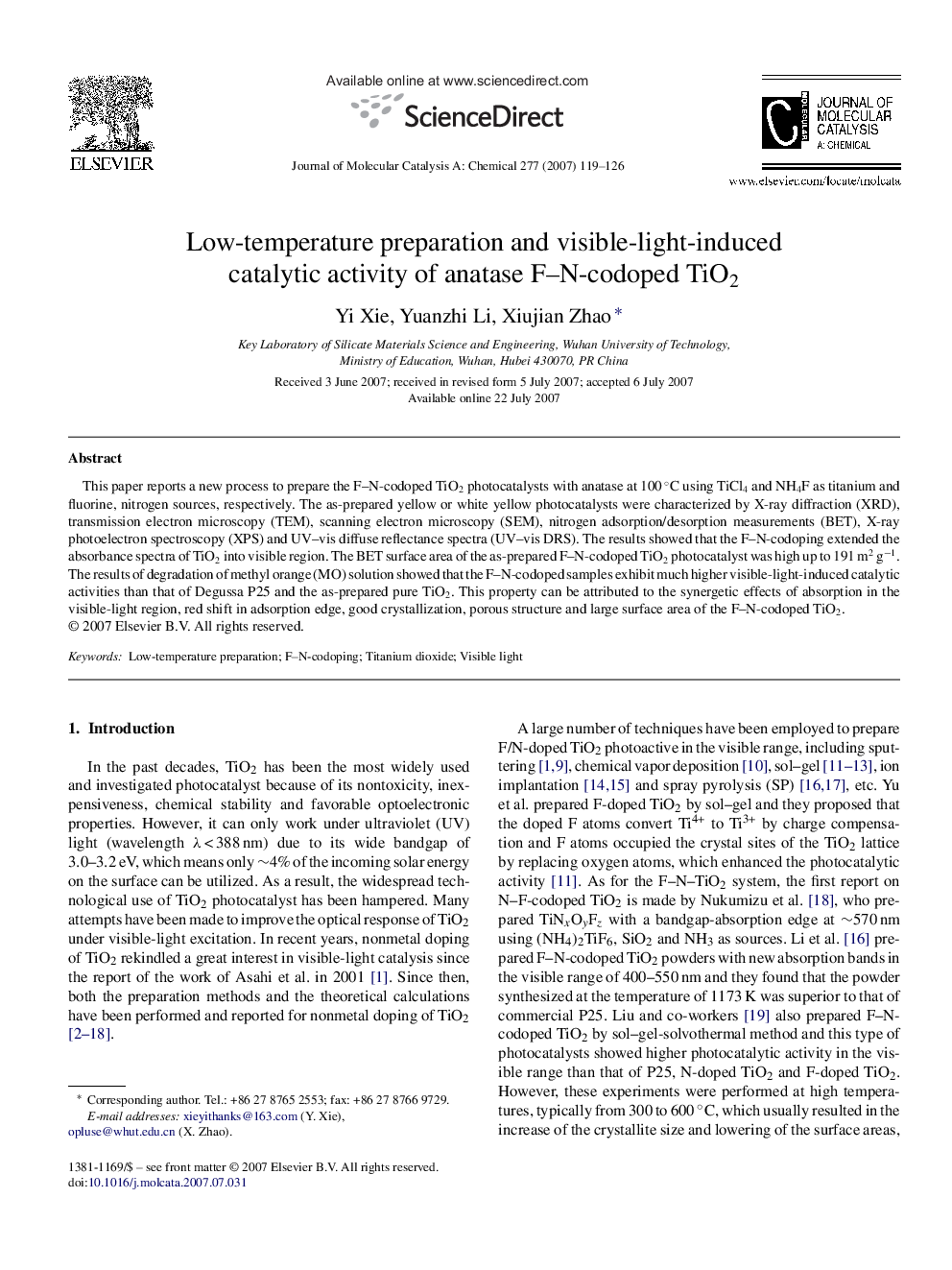| Article ID | Journal | Published Year | Pages | File Type |
|---|---|---|---|---|
| 67479 | Journal of Molecular Catalysis A: Chemical | 2007 | 8 Pages |
This paper reports a new process to prepare the F–N-codoped TiO2 photocatalysts with anatase at 100 °C using TiCl4 and NH4F as titanium and fluorine, nitrogen sources, respectively. The as-prepared yellow or white yellow photocatalysts were characterized by X-ray diffraction (XRD), transmission electron microscopy (TEM), scanning electron microscopy (SEM), nitrogen adsorption/desorption measurements (BET), X-ray photoelectron spectroscopy (XPS) and UV–vis diffuse reflectance spectra (UV–vis DRS). The results showed that the F–N-codoping extended the absorbance spectra of TiO2 into visible region. The BET surface area of the as-prepared F–N-codoped TiO2 photocatalyst was high up to 191 m2 g−1. The results of degradation of methyl orange (MO) solution showed that the F–N-codoped samples exhibit much higher visible-light-induced catalytic activities than that of Degussa P25 and the as-prepared pure TiO2. This property can be attributed to the synergetic effects of absorption in the visible-light region, red shift in adsorption edge, good crystallization, porous structure and large surface area of the F–N-codoped TiO2.
Graphical abstractUV–vis diffuse reflectance spectra shows that the F–N-codoping extends the absorbance spectra of TiO2 into visible region and the intensity of the visible-light absorption decreases with increasing amount of starting reagent NH4F. Figure optionsDownload full-size imageDownload as PowerPoint slide
